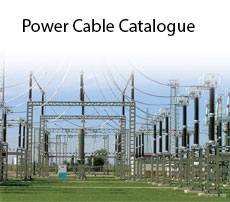Automobile Wire-PSA
PSA Group :
The PSA group supports two different vehicles production lines : PEUGEOT and CITROEN . Related automobile wire’s standards are referred to this groups publications. The former standard is STE 9609503299 (1996) and newer one is STE 9641879499 (2003) .Scope :
This technical specification defines the technical conditions, the approval and acceptance conditions and the prescriptions concerning the construction and tests on low voltage reduced insulation electrical conductors designed for the manufacturing of electrical harnesses for PSA Group road vehicles.Temperature Classes :
Depending on where they are located on the vehicle, electric conductors can be required to conform to the following physical properties (temperature and vibration).|
Class |
Operating Temperature TS |
Environment |
Typical Applications (given for information) |
Test temperature (TE) |
|
T1 |
- 40 °C / 85 °C |
Exposed to moderate constant source of heat on harnesses. |
Combined dashboard. Electronic compartment under engine hood (inside fender). Except roof-light harness. |
100 °C |
|
T2 |
- 40 °C / 100 °C |
Exposed to high sources of heat but not attached to harnesses. |
At least 20 cm from window without intermediate protection - roof-light harness Under engine hood attached to body and at more than 30 cm from engine. |
125 °C |
|
T3 |
- 40 °C / 125 °C |
Highly exposed to strong sources of heat but not attached to harnesses. |
Under engine hood between engine and bulkhead and more than 20 cm from exhaust. |
150 °C |
|
T4 |
- 40 °C / 150 °C |
Very exposed to high sources of heat, attached to harnesses. |
Under engine hood to oil system and clamping on block at more than 10 cm from exhaust. |
175 °C |
|
T5 |
- 40 °C / 175 °C |
Very high source of heat, linked directly with harness. |
Under engine hood or brake equipment type function, or at less than 10 cm from exhaust |
200 °C |
|
T6 |
- 40 °C / 200 °C |
Sources of heat identified as high temperature. |
Under engine hood or specific function such as temperature probe or catalytic chamber. |
225 °C |
|
T7 |
- 40 °C / 250 °C |
The use of these conductors will be carried out after testing in mission profile by the PSA experiment departments with validation by E.ST. |
275 °C |
|
|
T8 |
- 40 °C / 300 °C |
325 °C |
||
|
|








